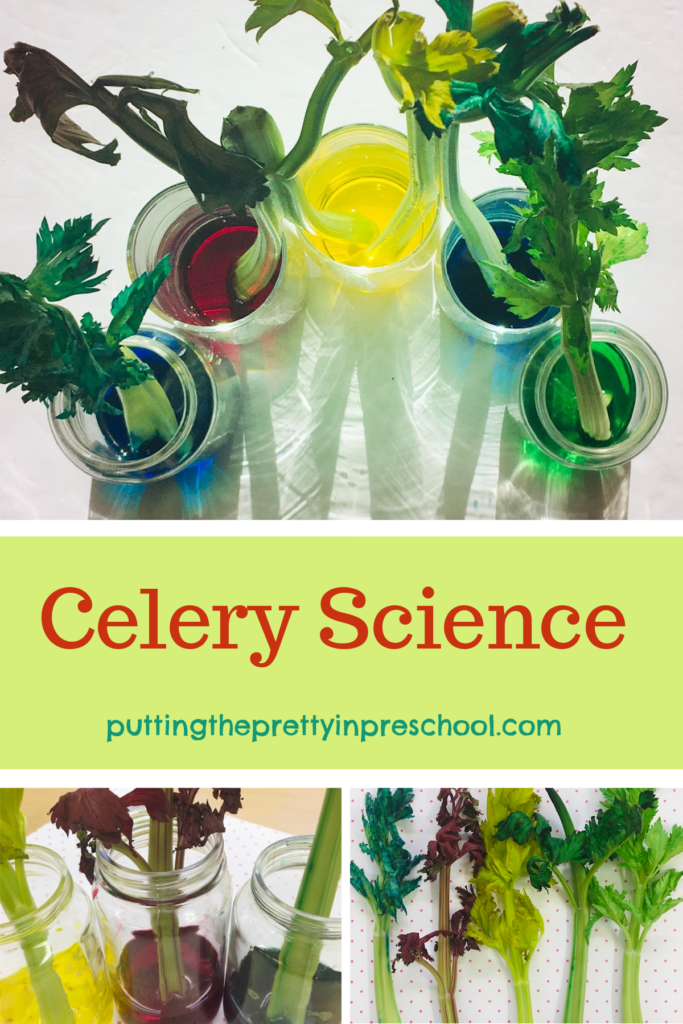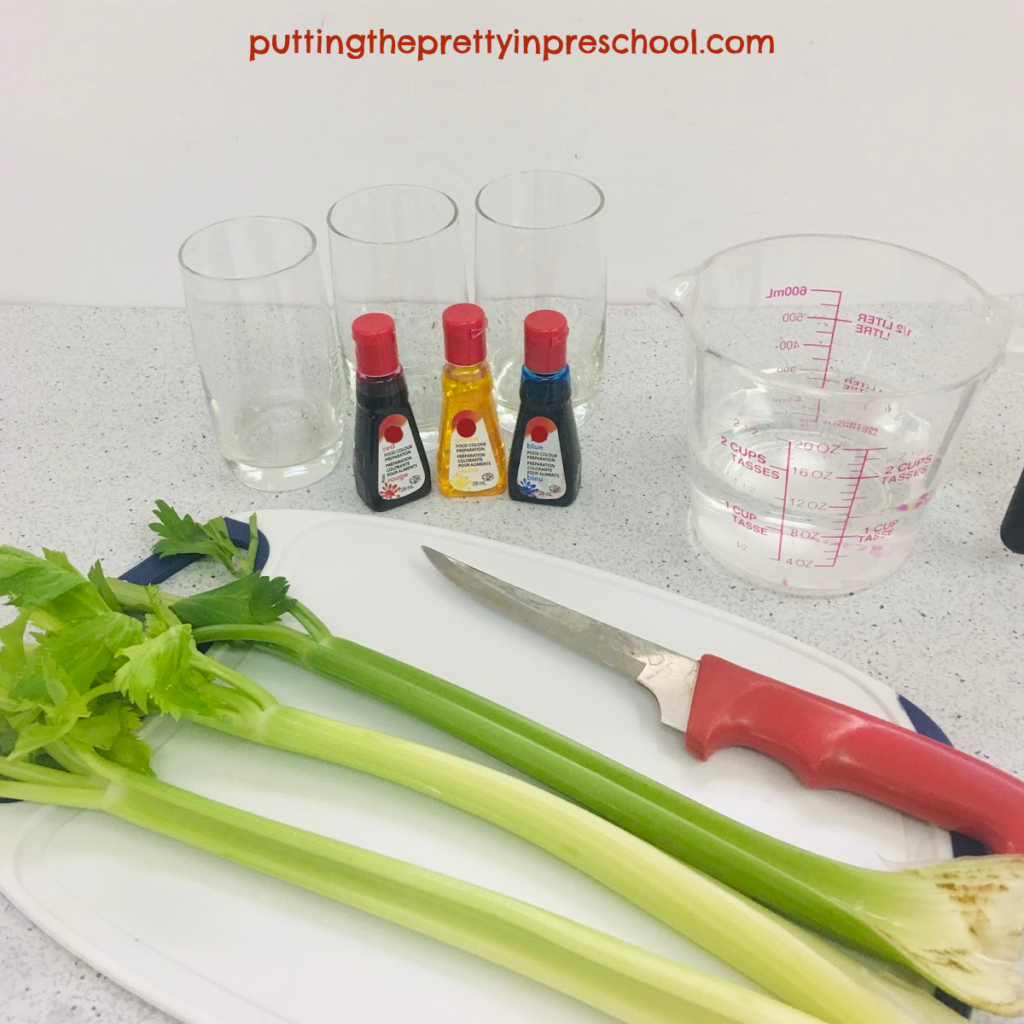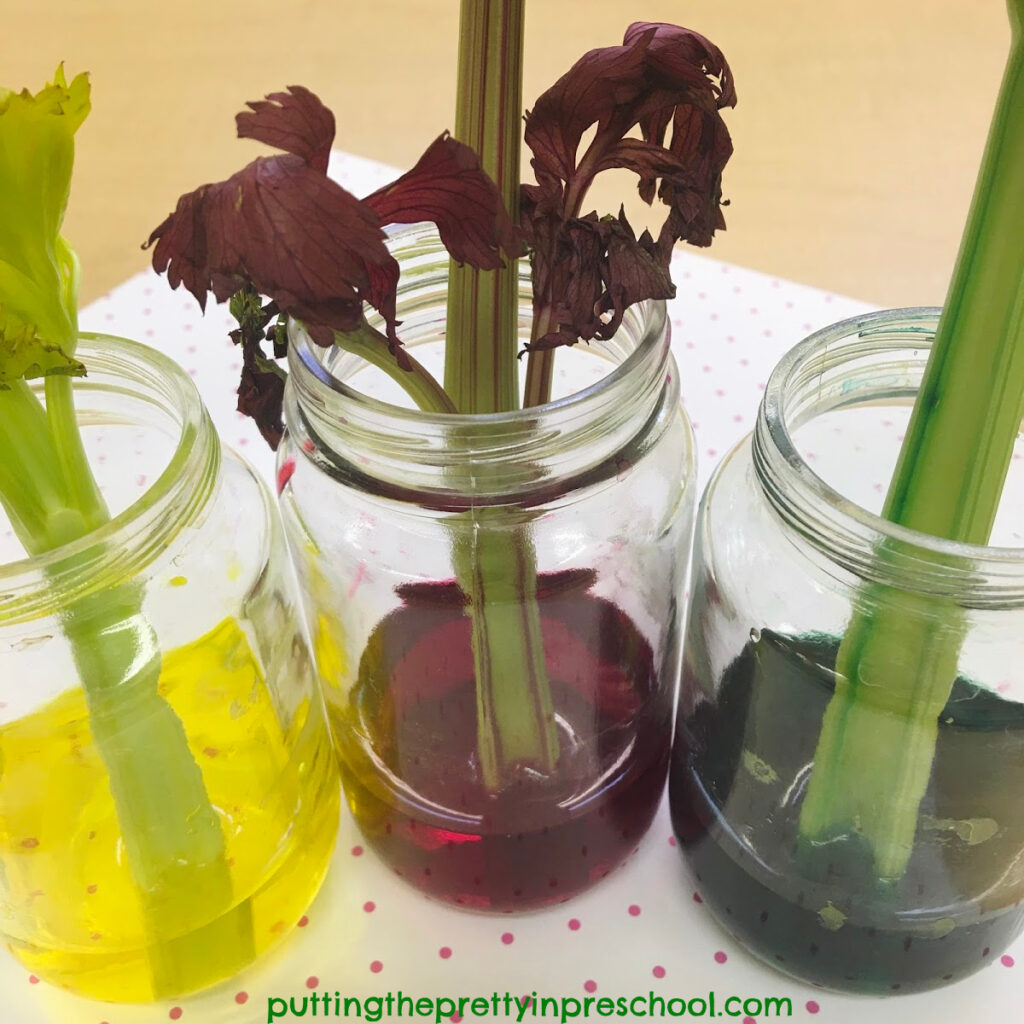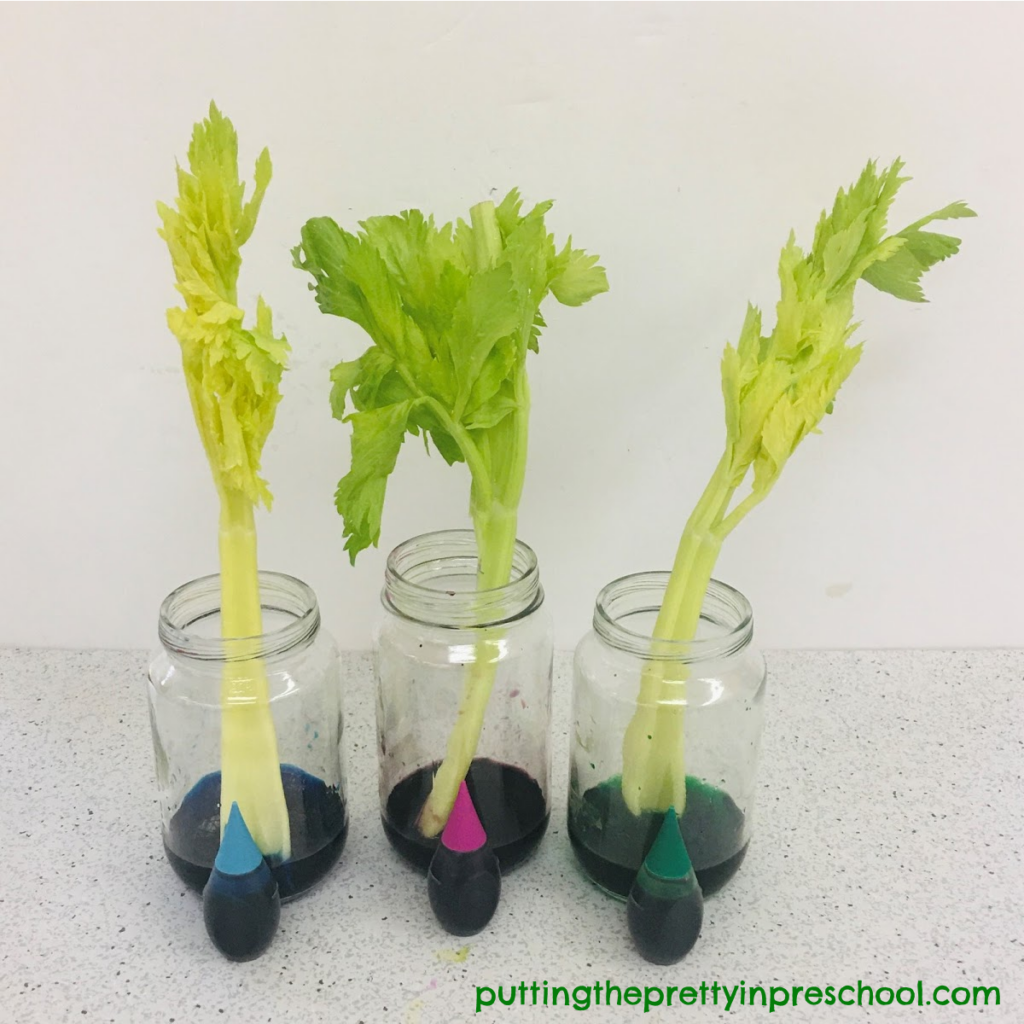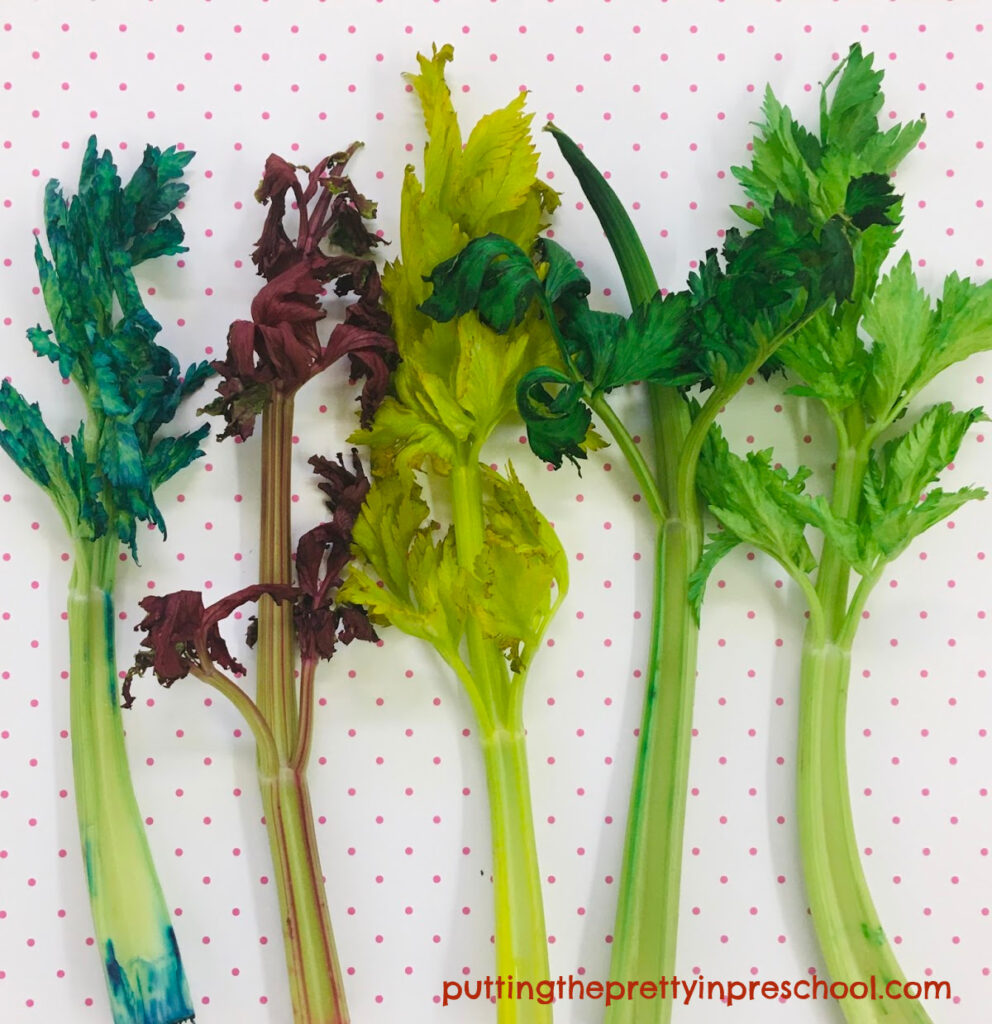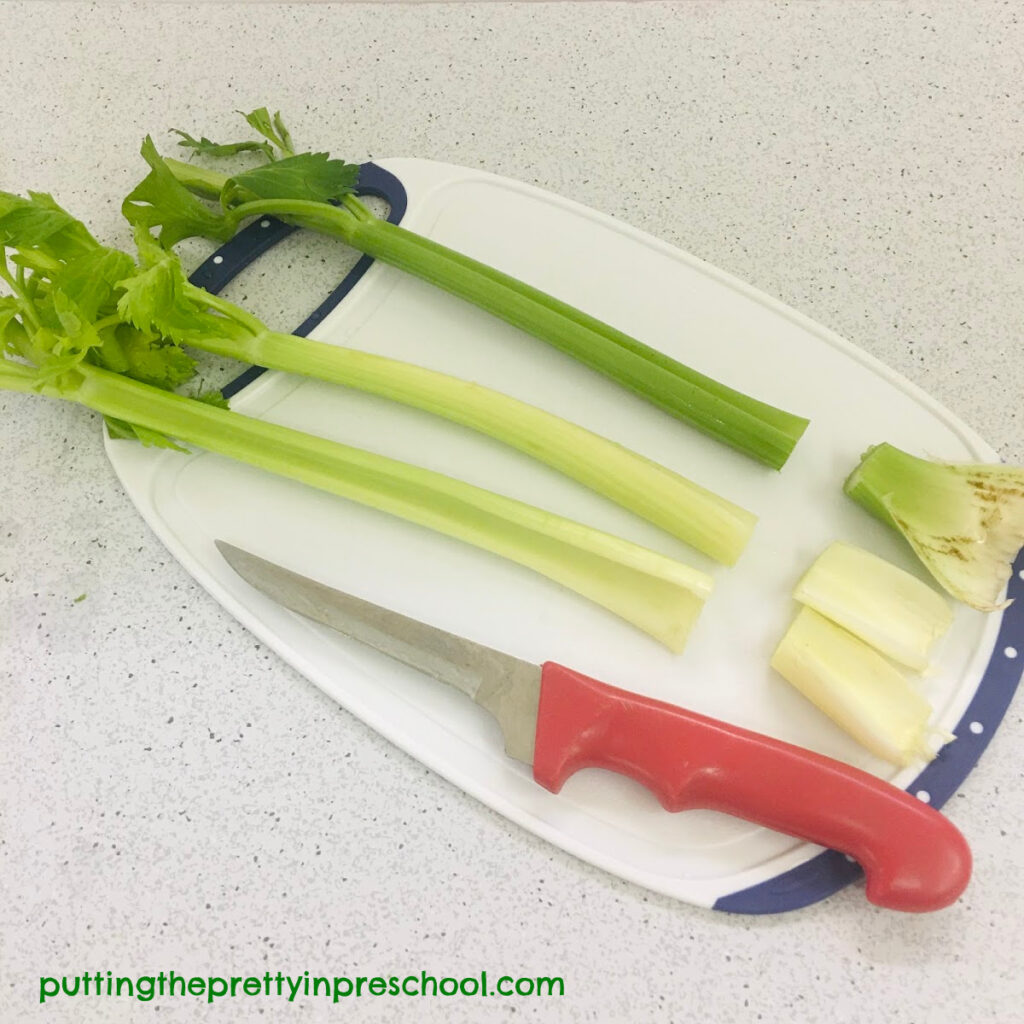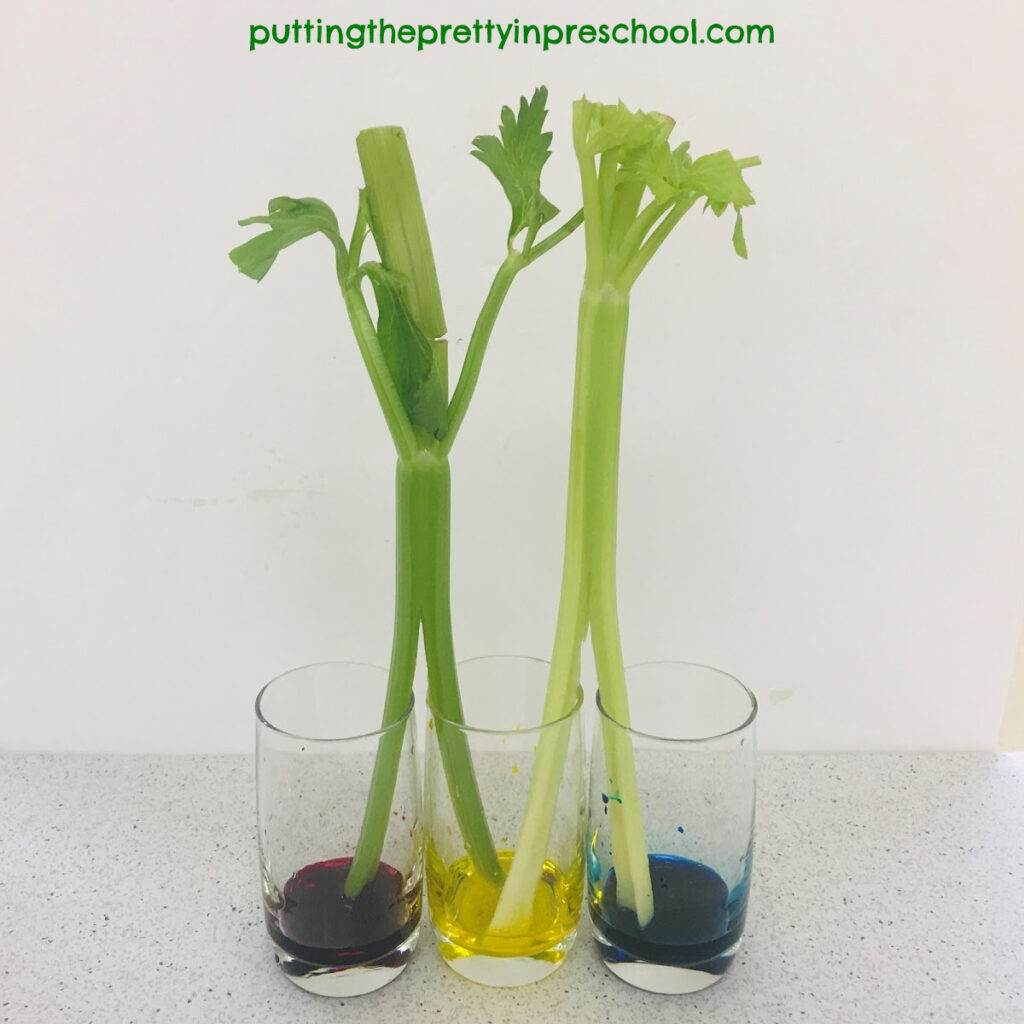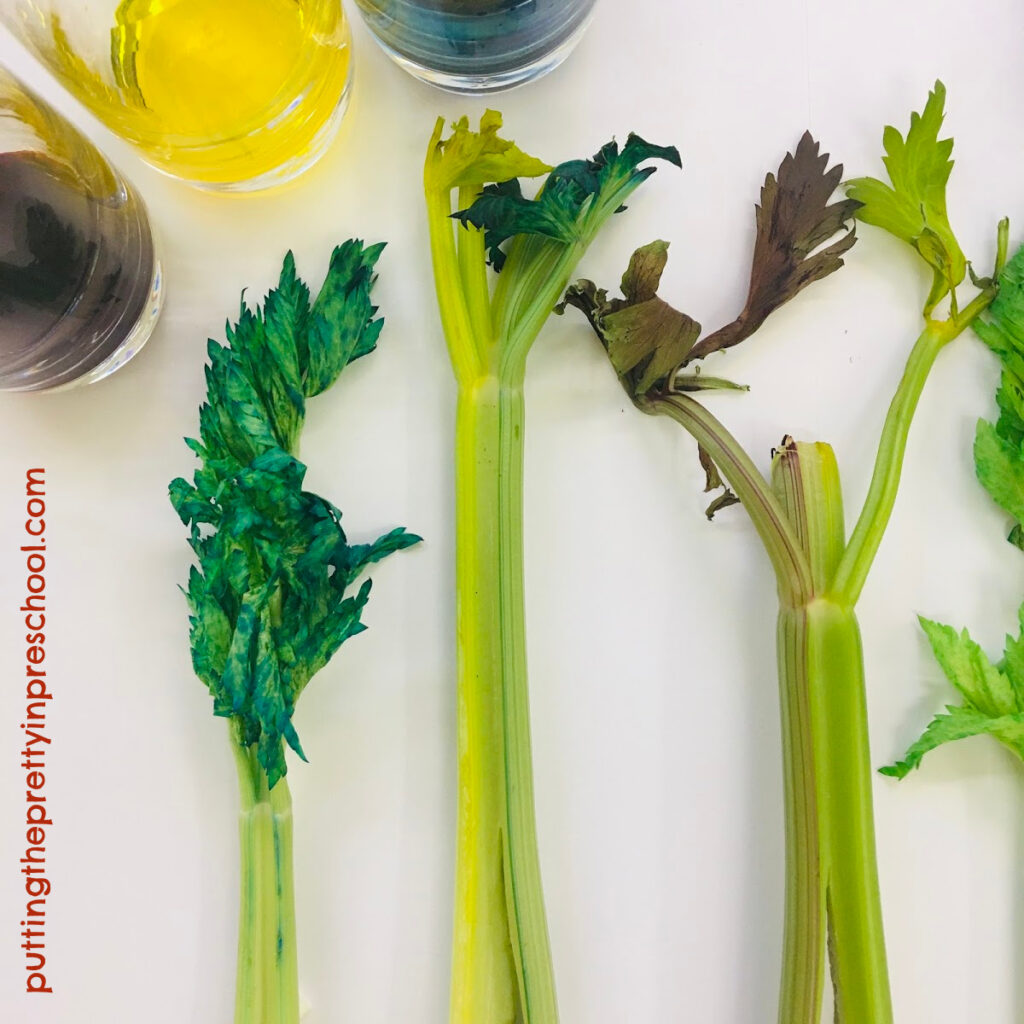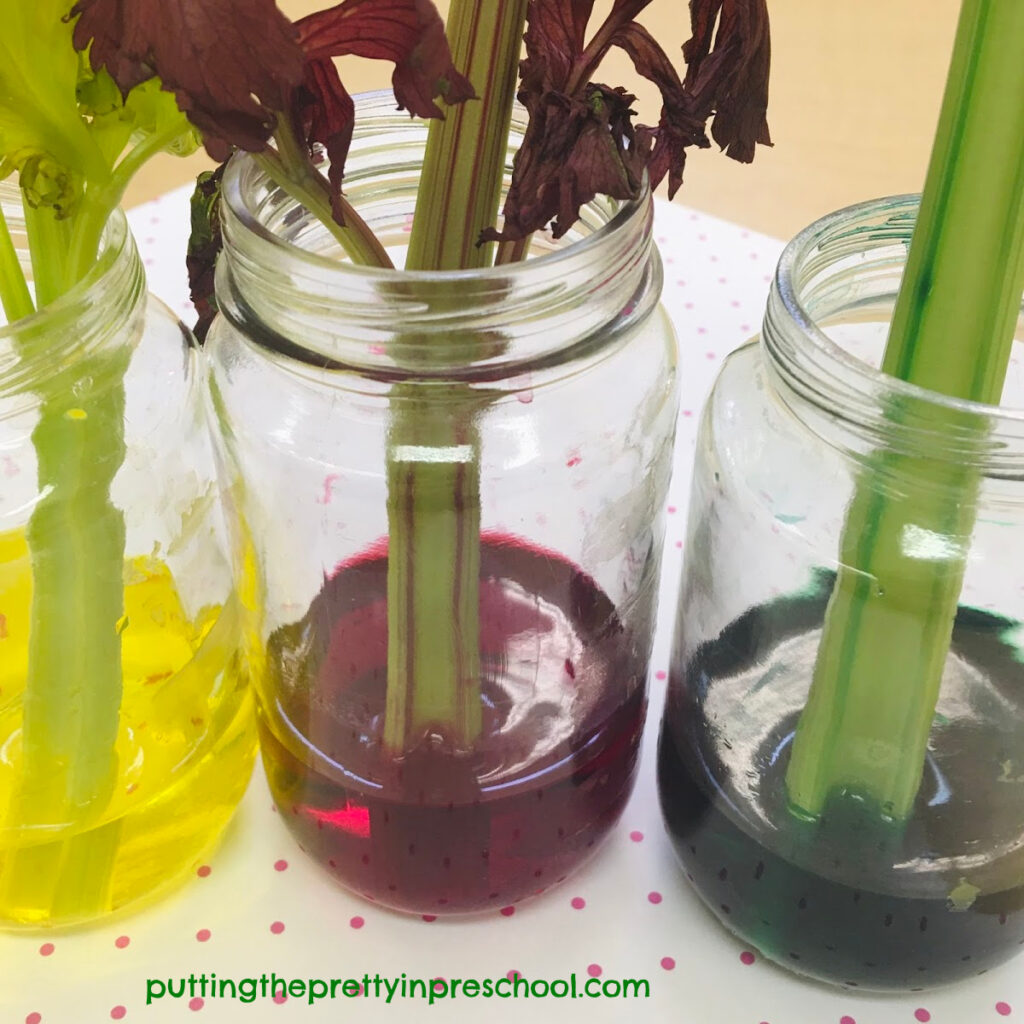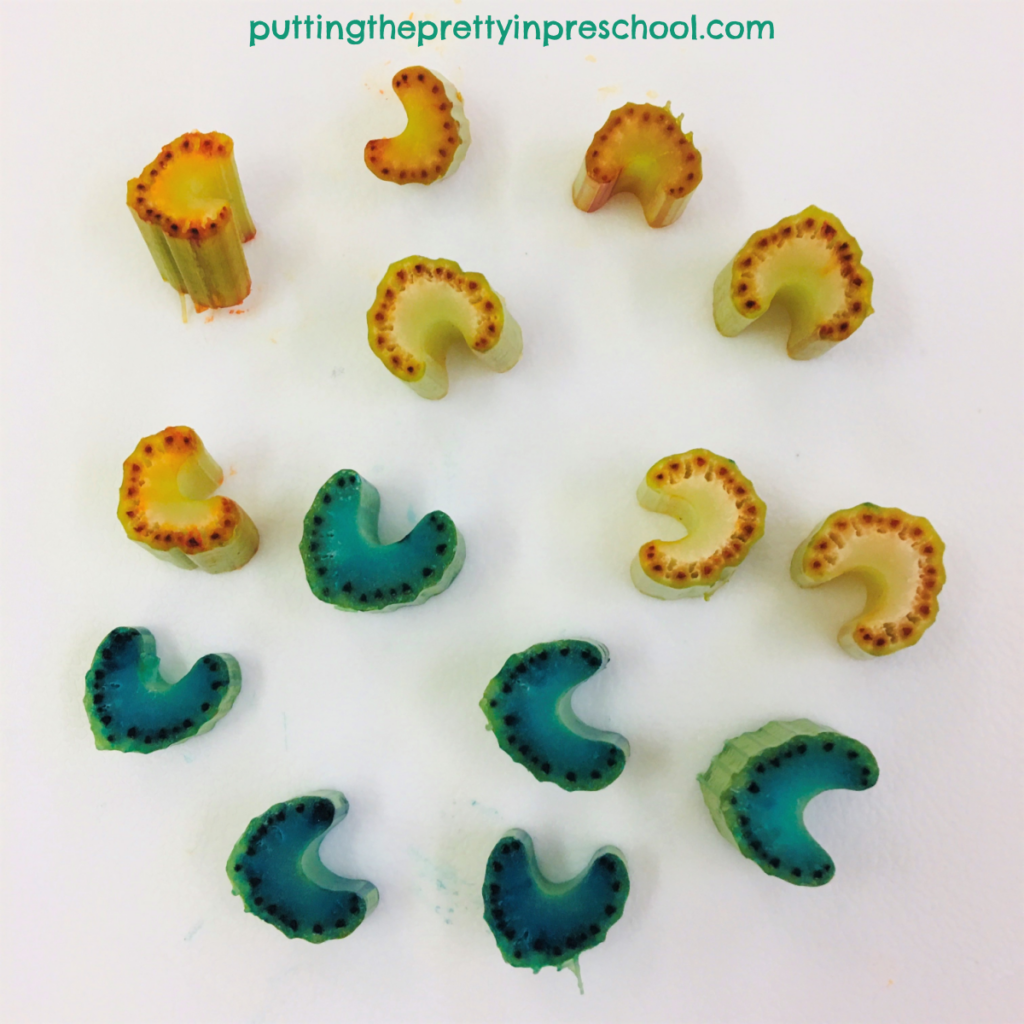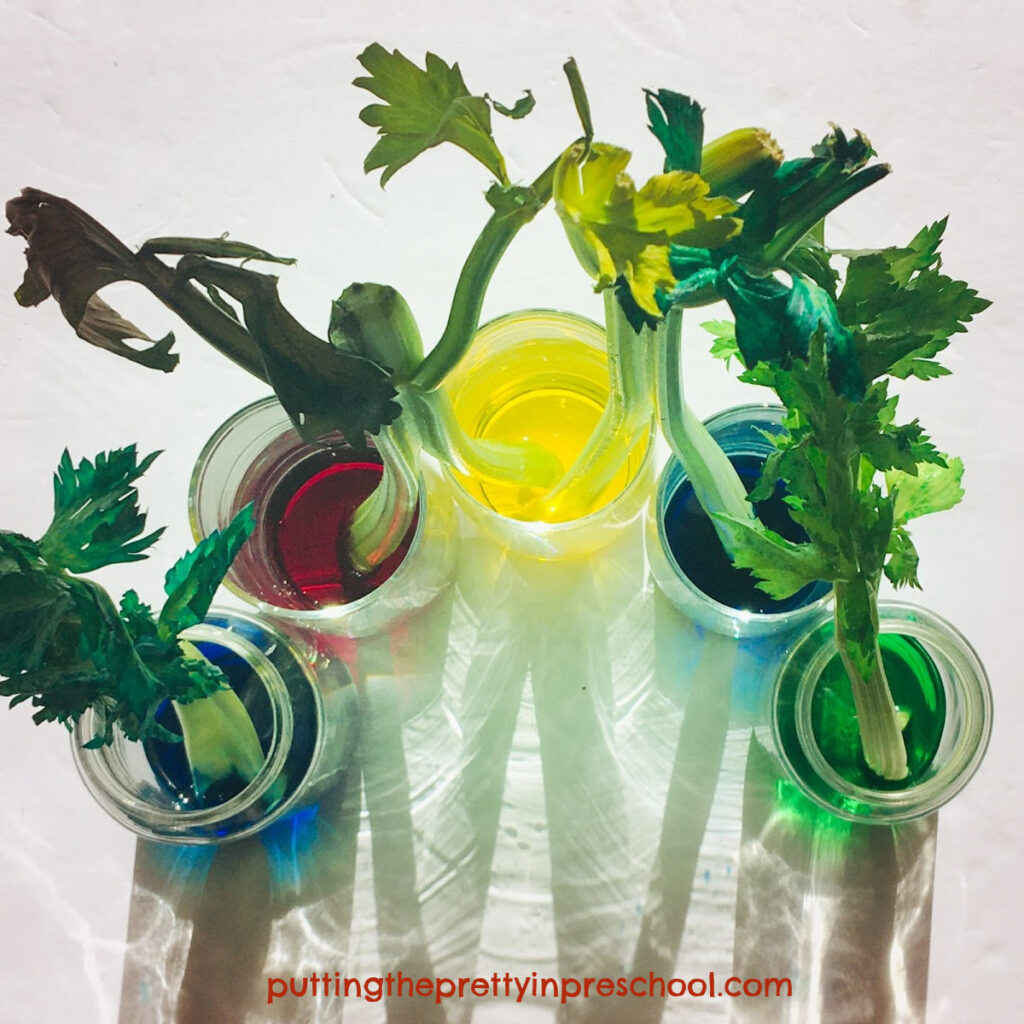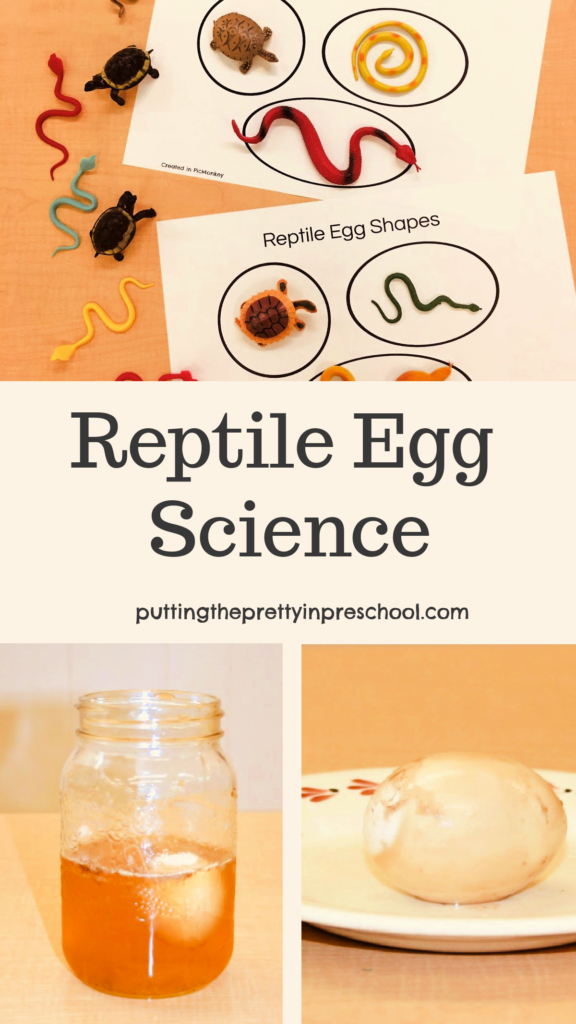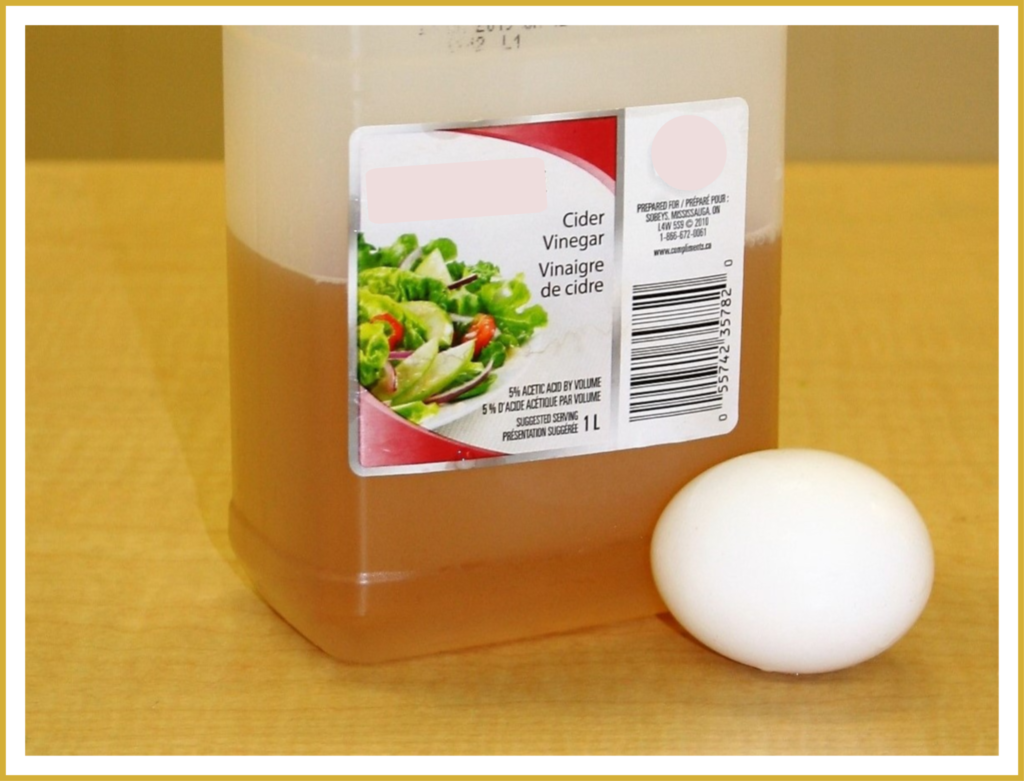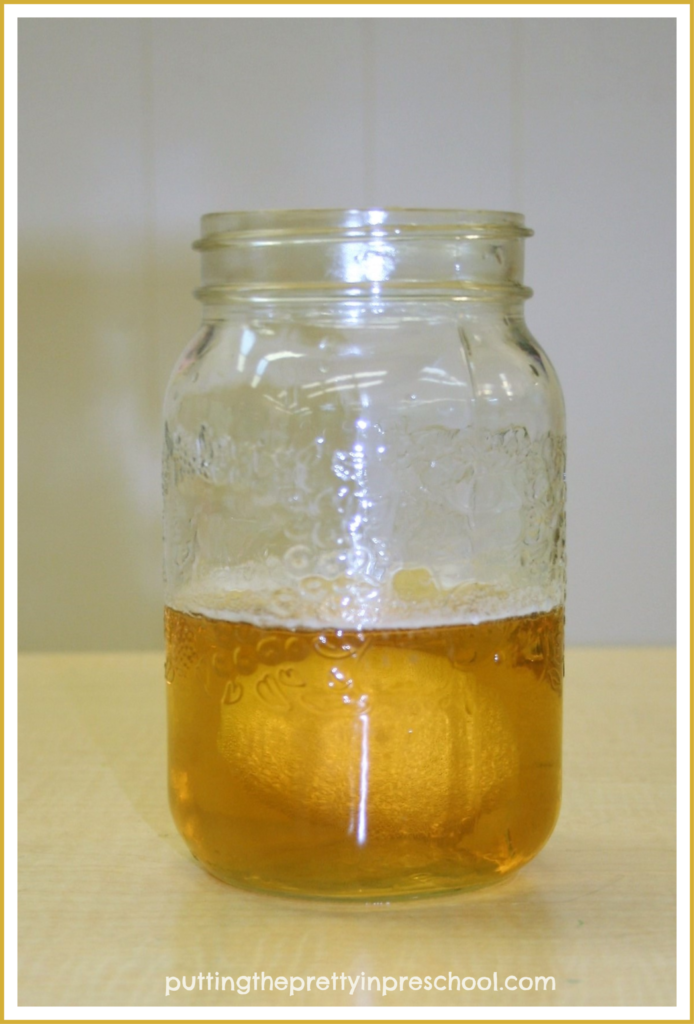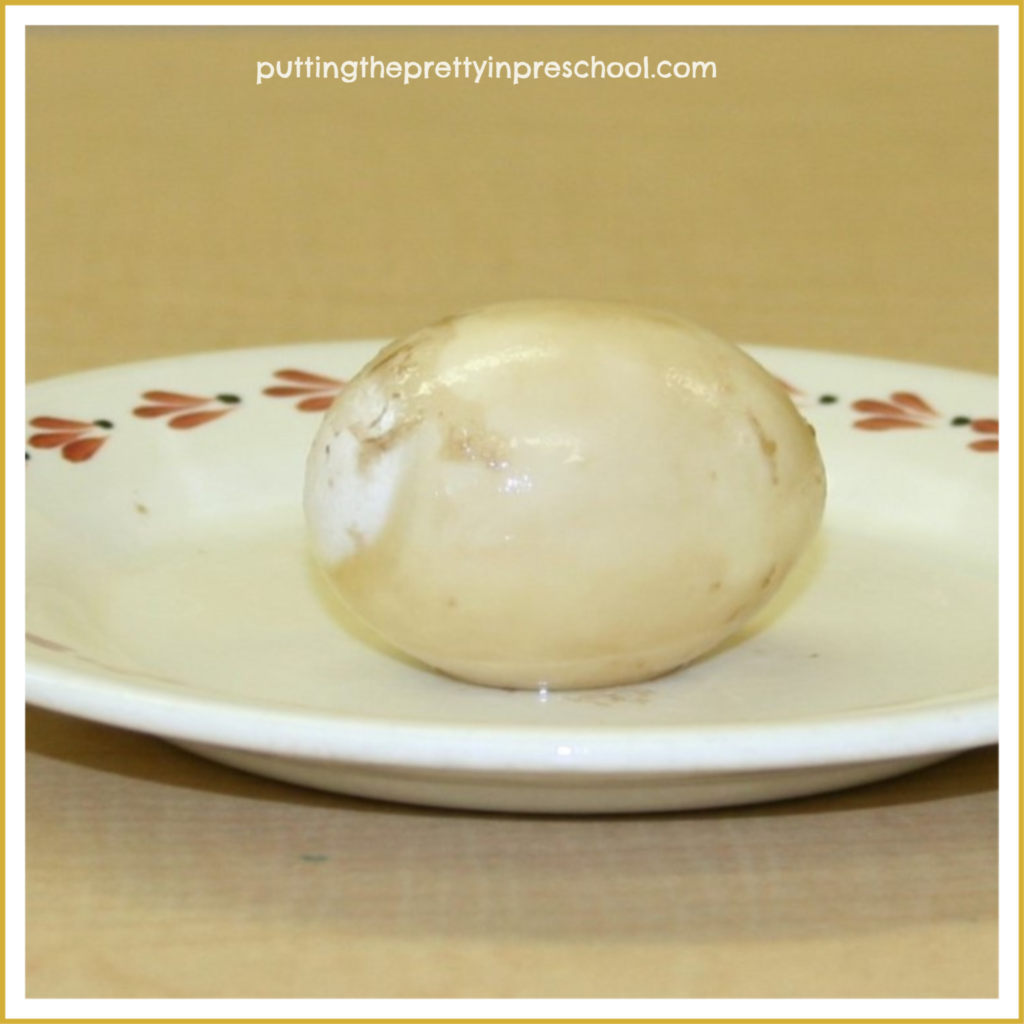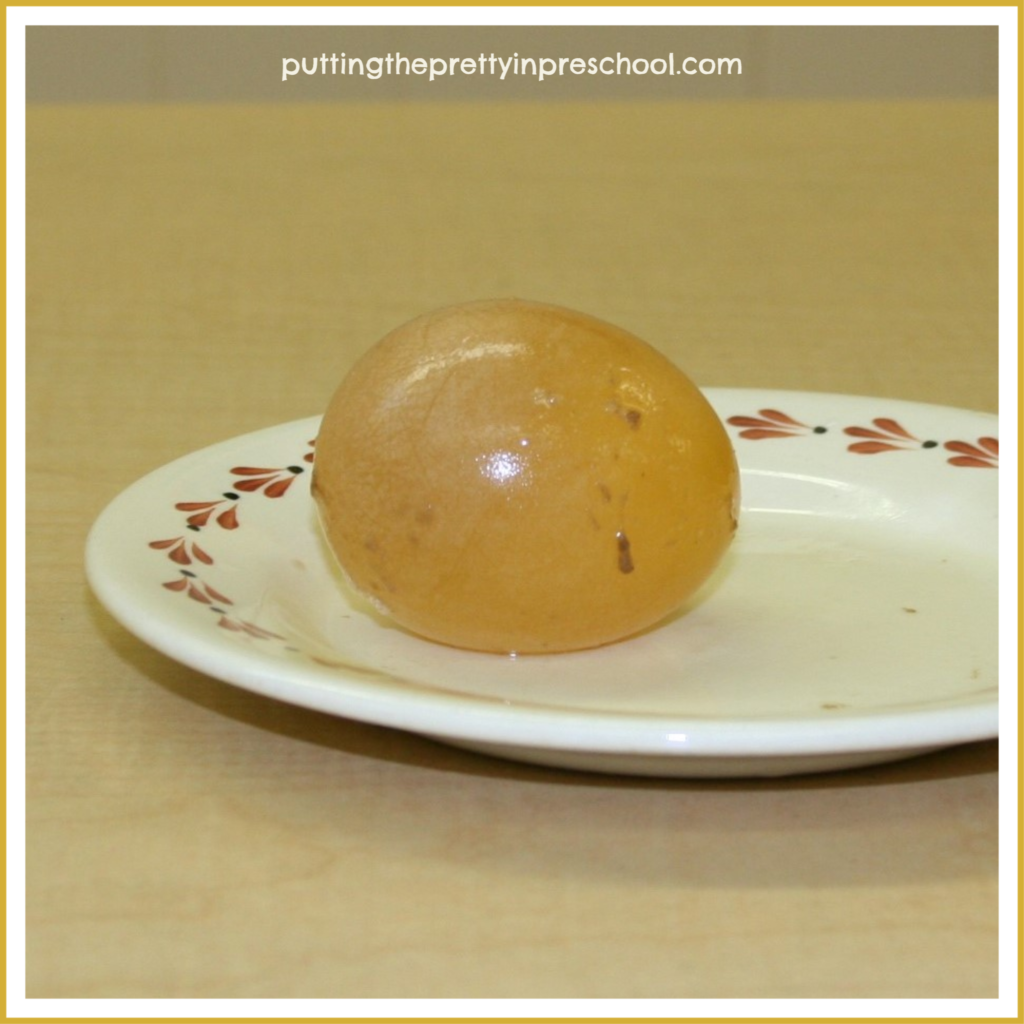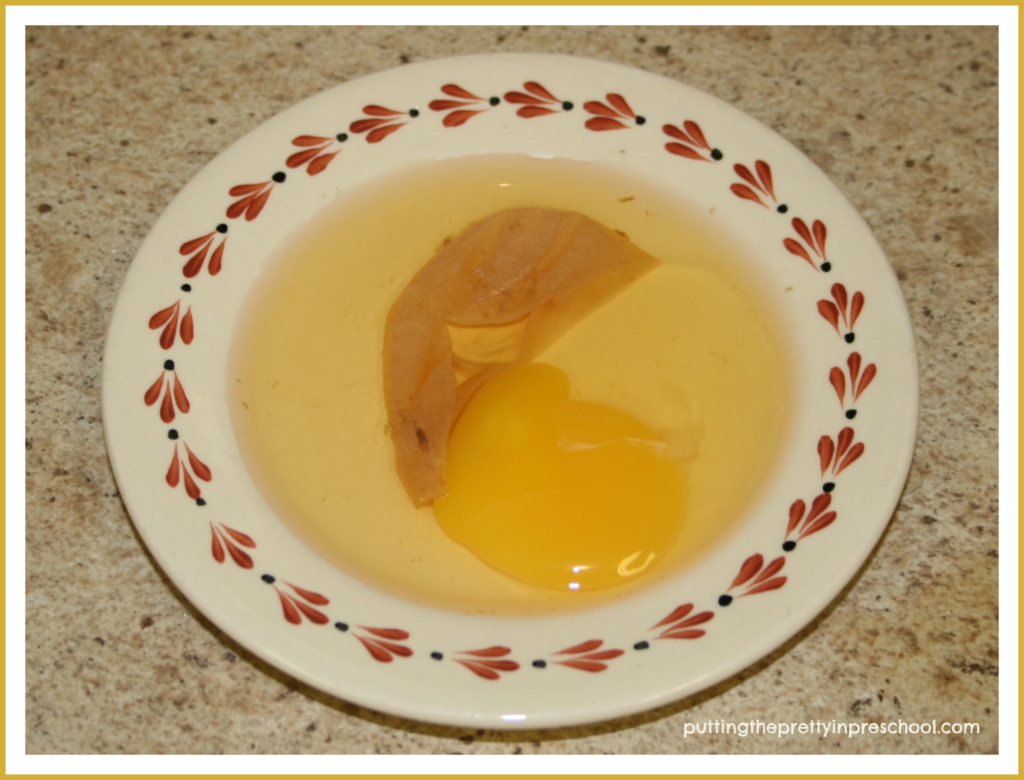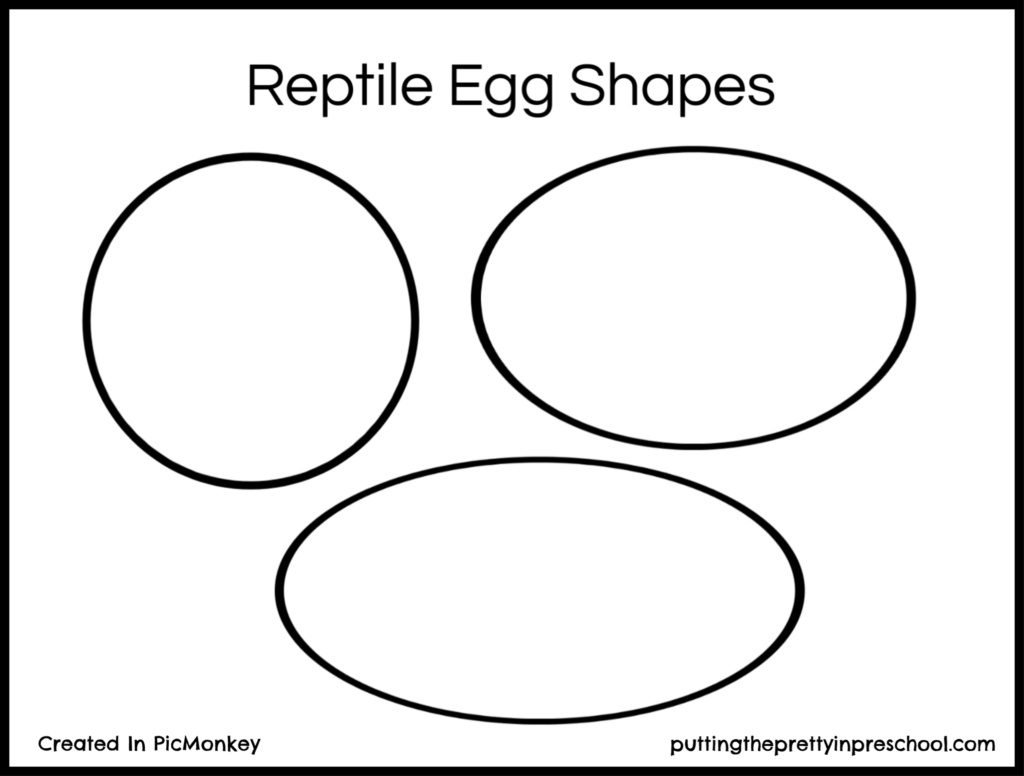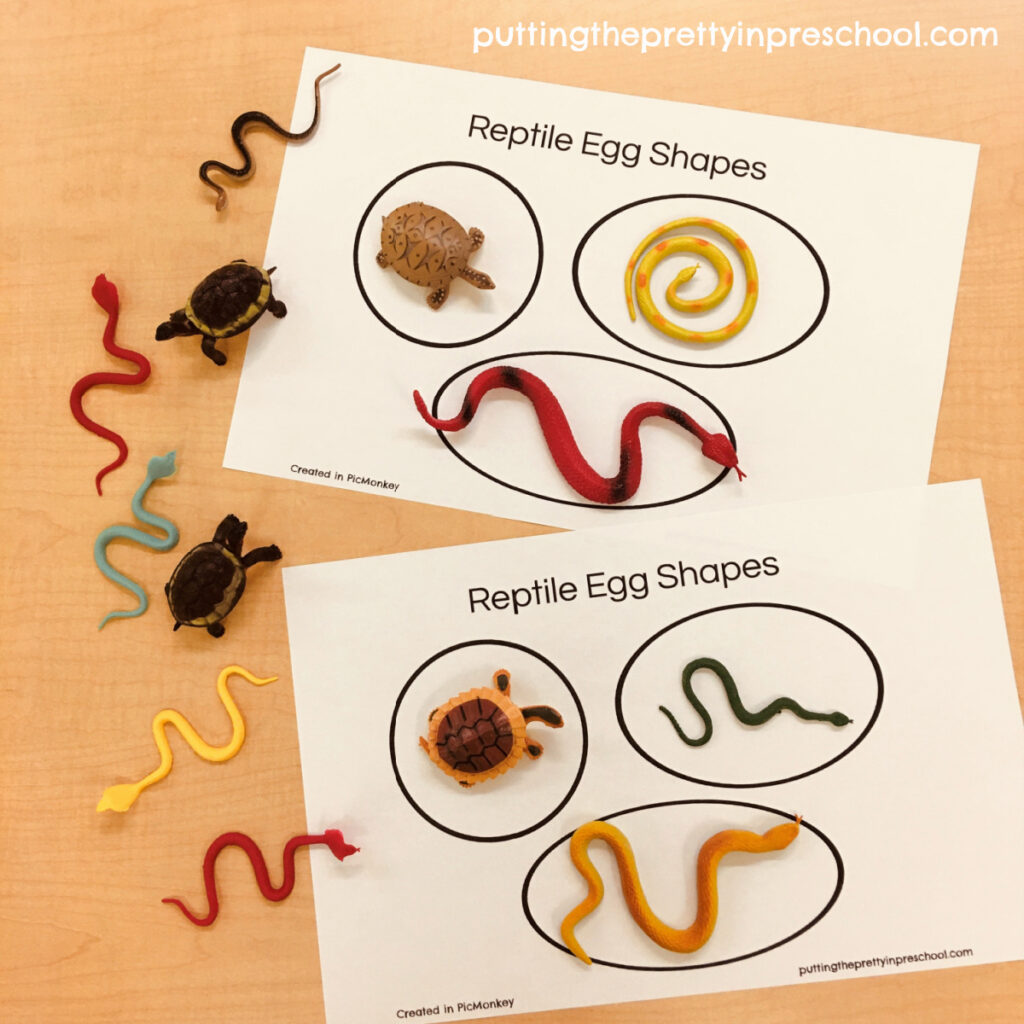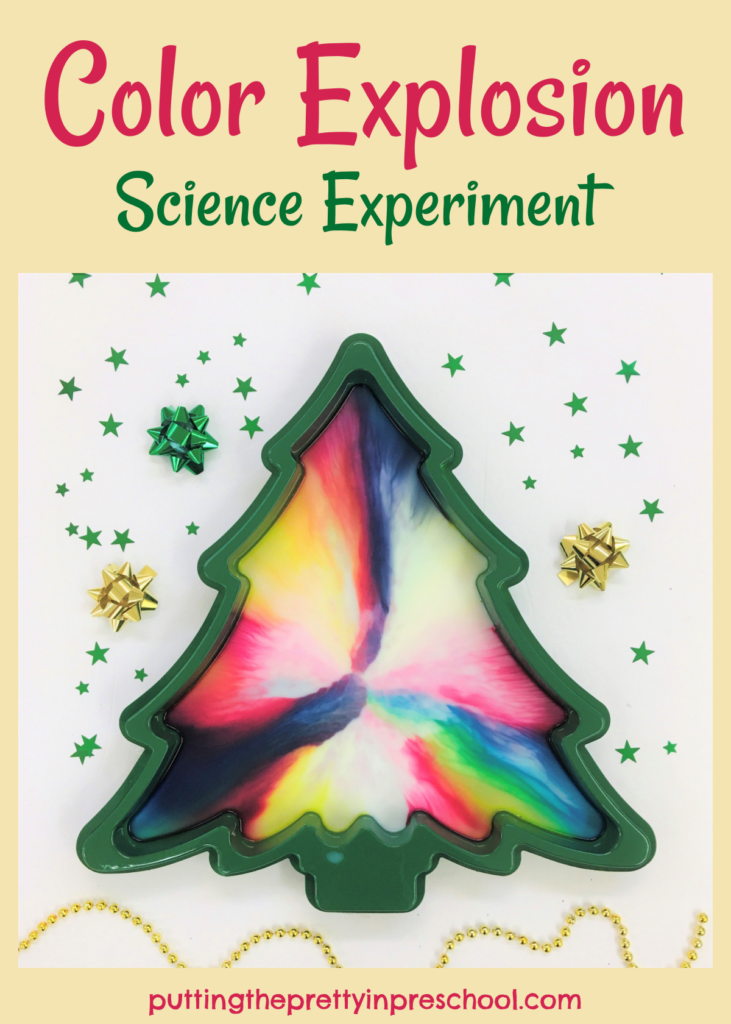
_______
This dramatic color explosion science experiment is one of the simplest ones you will find. It uses ingredients you probably have in your home, is easy to set up, and shows stunning, instant results.
_______
Supplies To Collect
- serving tray
- milk
- food coloring (1 – 4 colors)
- liquid dish soap

_______
Conducting The Experiment
Pour a thin layer of milk into a serving tray placed on a table. I use an inexpensive 12-inch x 12-inch tree-shaped vegetable tray to add interest to the experiment. About three cups of milk will provide a nice layer in a serving tray this size.
Squeeze drops of food coloring in different parts of the tray. Use one, two, three, or even four colors. Primary colors work well.
Squirt a little dish soap in a few color pools.
_______
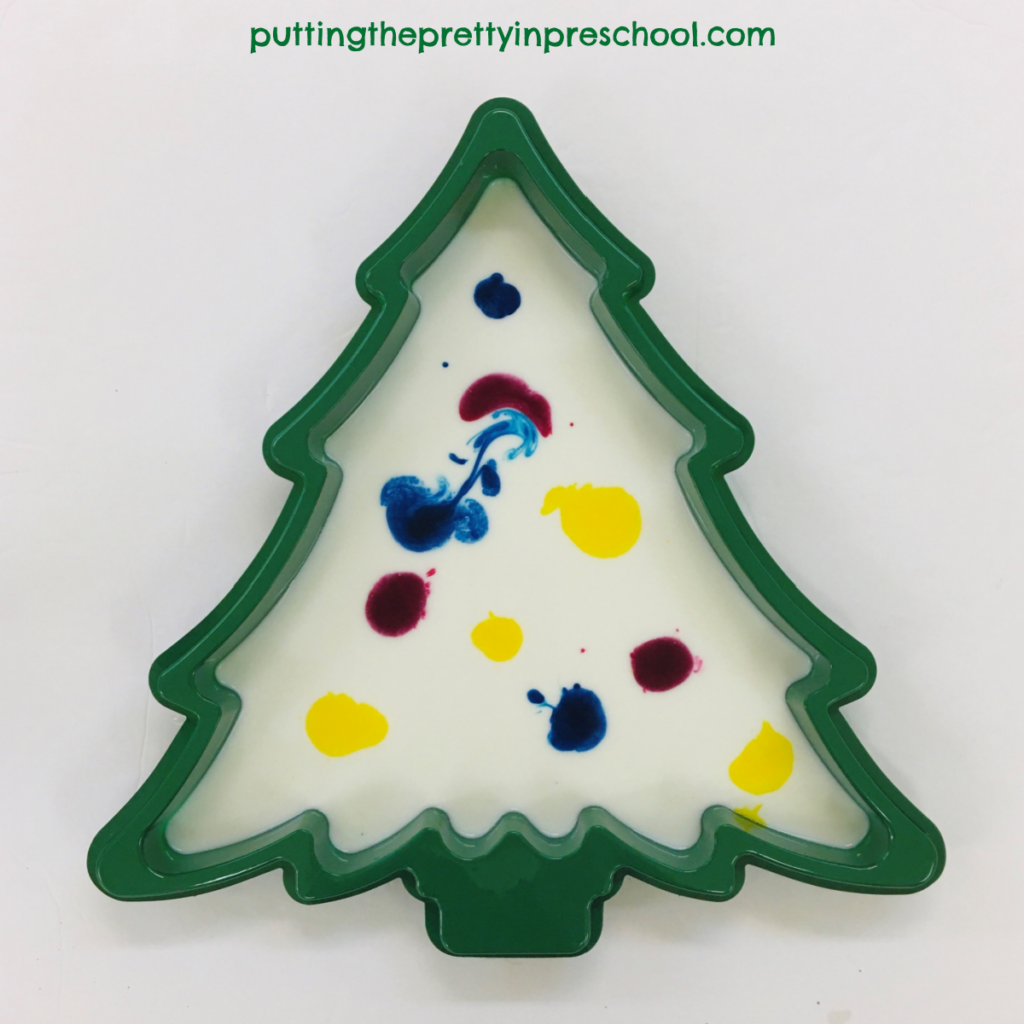
_______
The food coloring immediately explodes to the tray edges, blending and making new colors.
Try adding a bit more food coloring, and one more squirt of dish soap. I add a little more blue, red, and yellow to the bottom right section because most of the color has moved to other areas of the tray. I squirt a tad more soap on top. There isn’t a noticeable change right away. In fact, after the initial color burst, nothing much seems to happen.
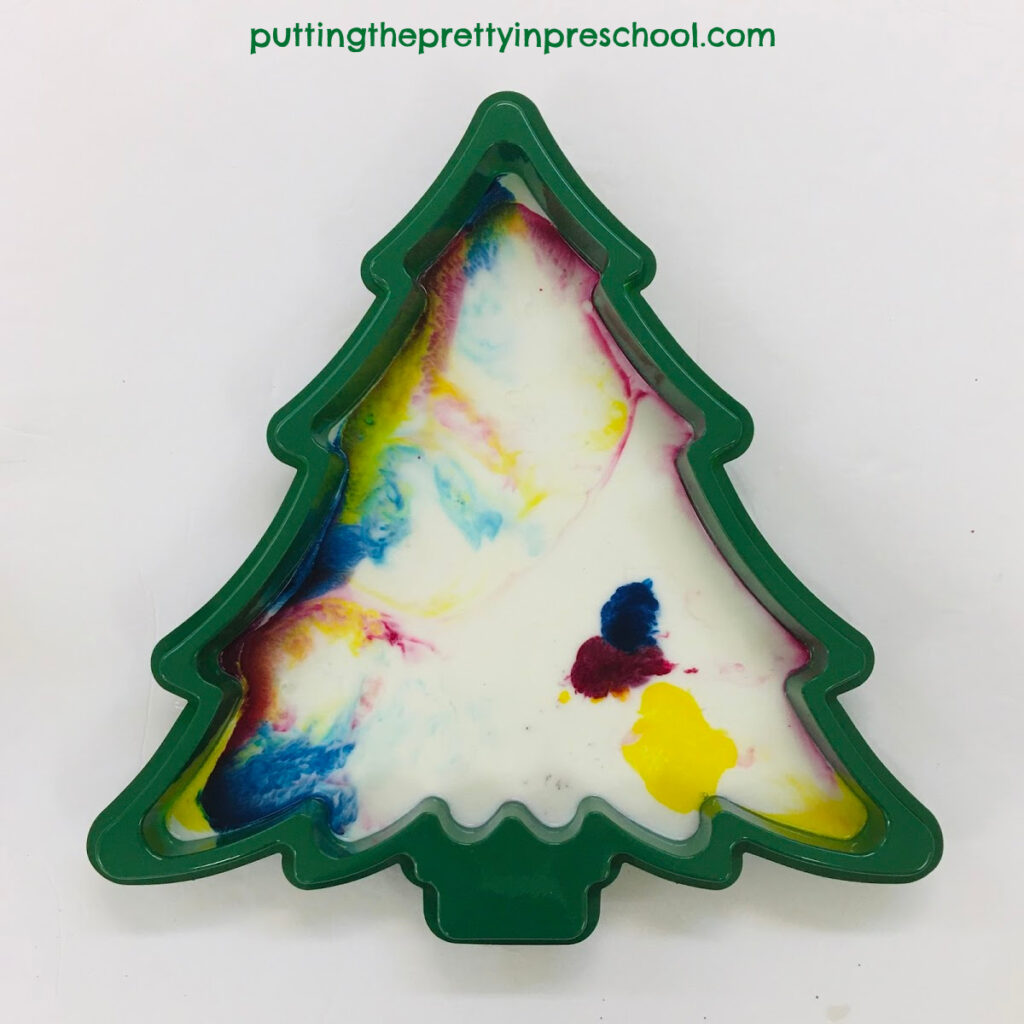
_______
But wait! The experiment doesn’t end here. Leave the tray on the table undisturbed, and check back a few times over the next half-hour. The food coloring slowly moves through the milk and fills the tray.
Each time you look, new color designs are visible on the surface of the milk.
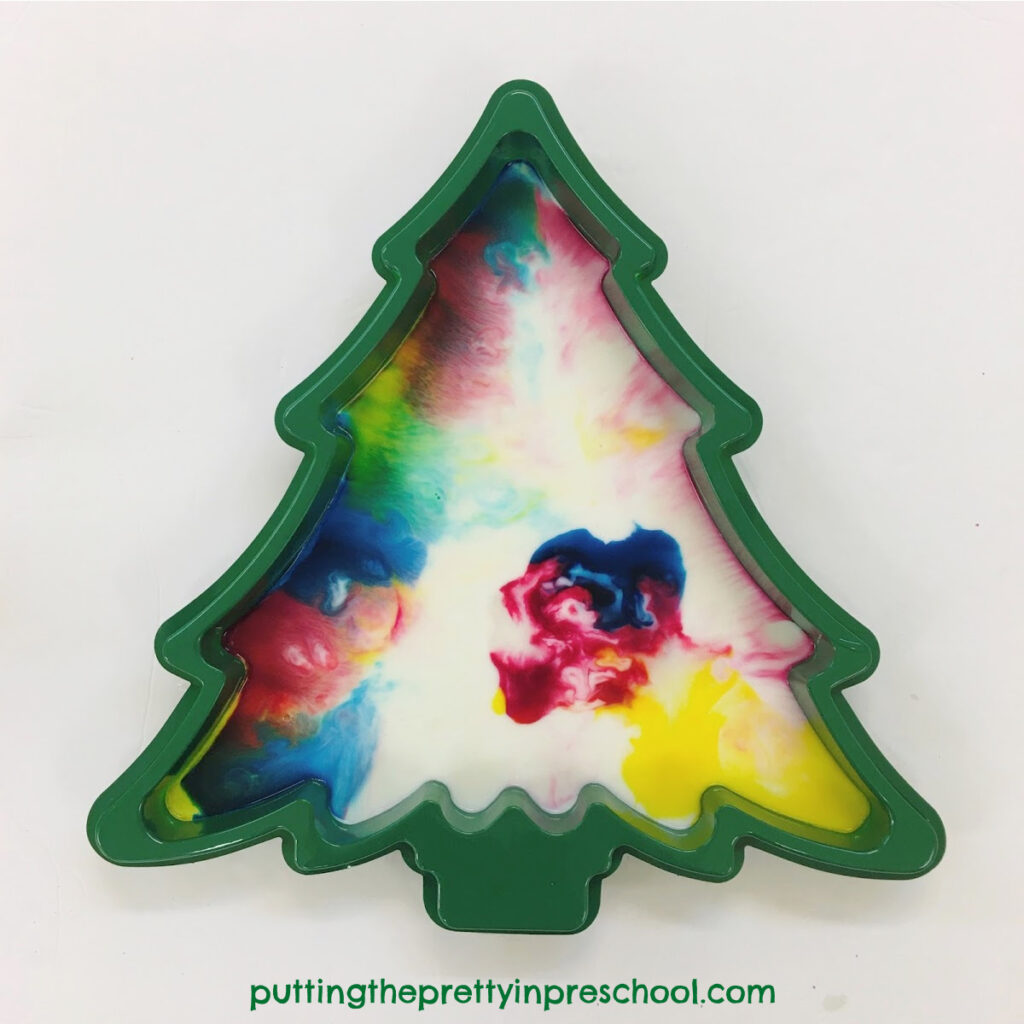
_______
Gradually, the whole tray is color-infused.
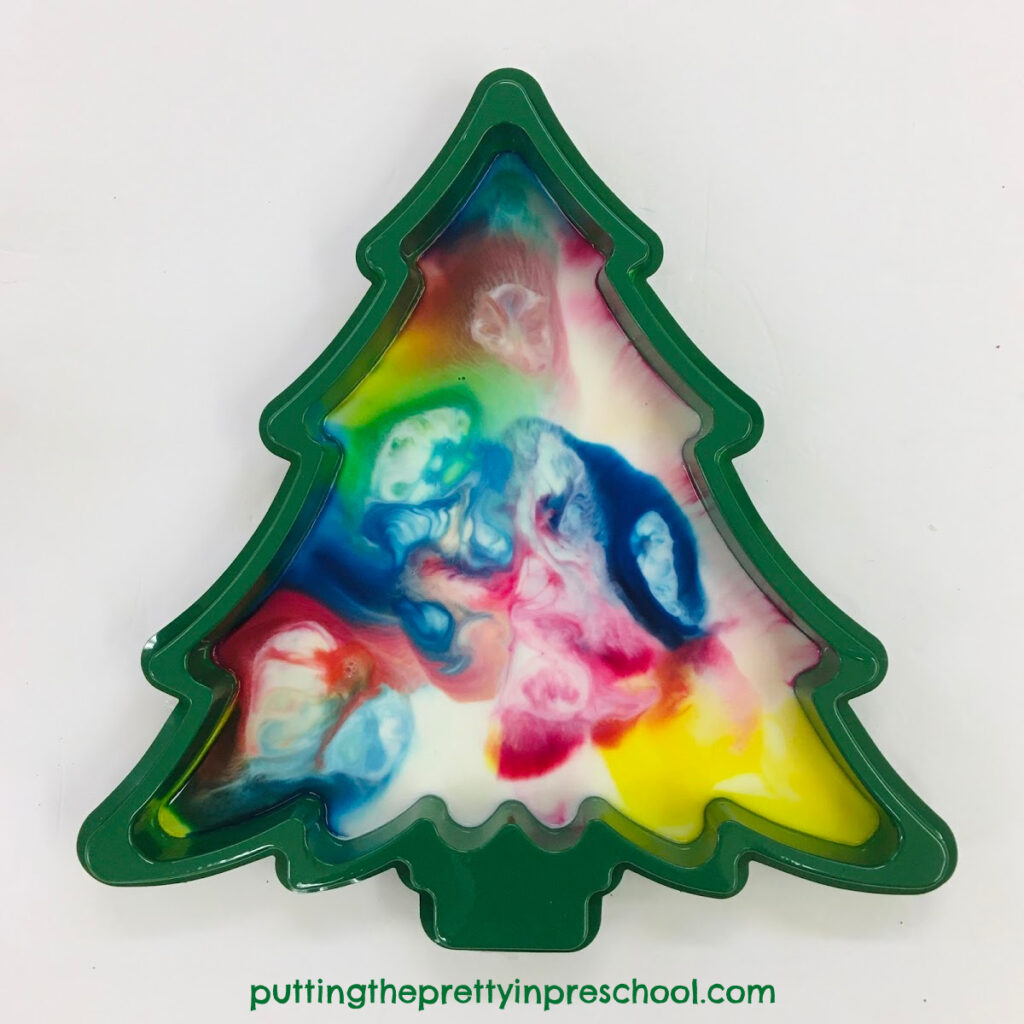
_______
This color explosion science experiment is perfect for introducing to a group of early learners. At preschool, I like to set it out just before snack time and have students take a second look at what has happened after they are done eating. Then everyone has another look at the tray just before going home.
_______
Related: Pumpkin Color Changing Milk Experiment
_______
Color Explosion Experiment Take Two
In the above demonstration of the science project, I use 2% milk. Below, I show the results of the same experiment done with 1% milk. This time I add drops of color and a squirt of dish soap only once. The food coloring added is generous.
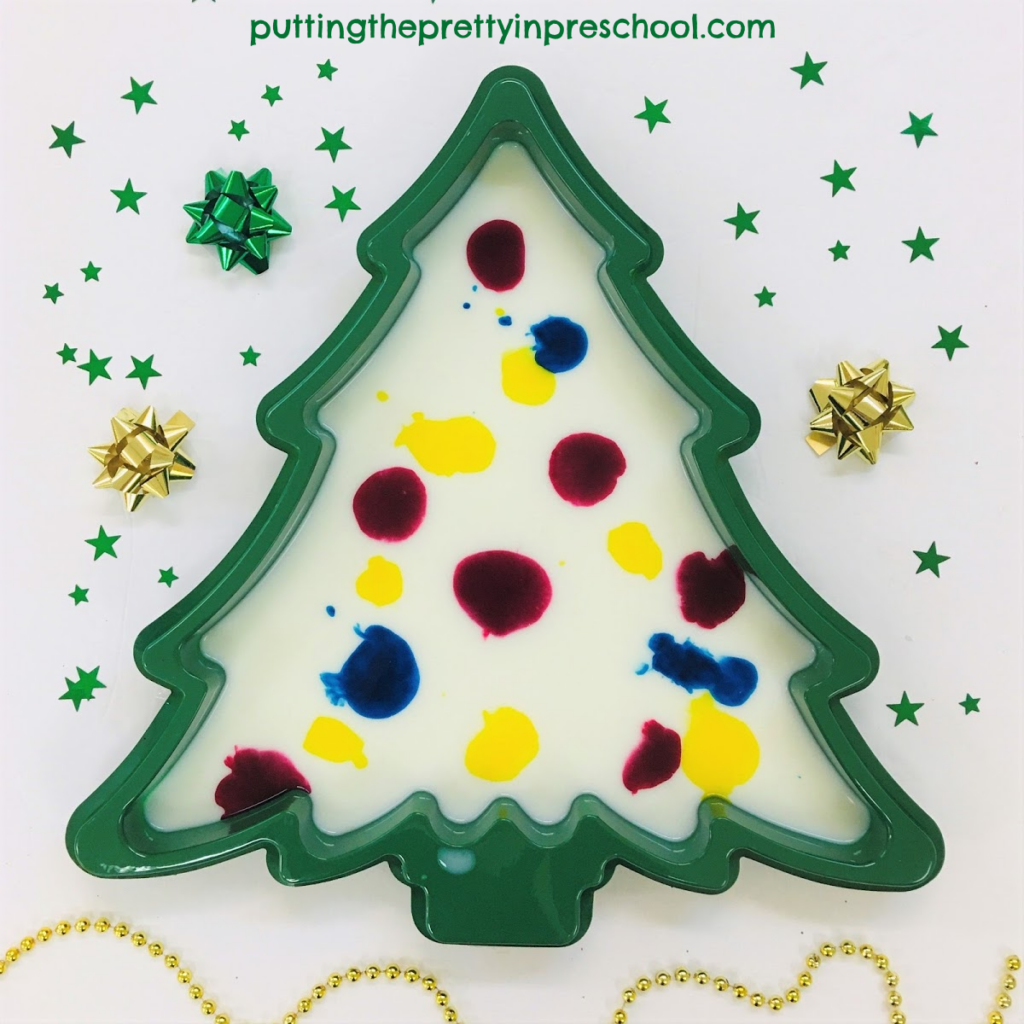
_______
In checking back in ten minutes after the initial explosion, the color has moved away from the edge of the tray towards the center.
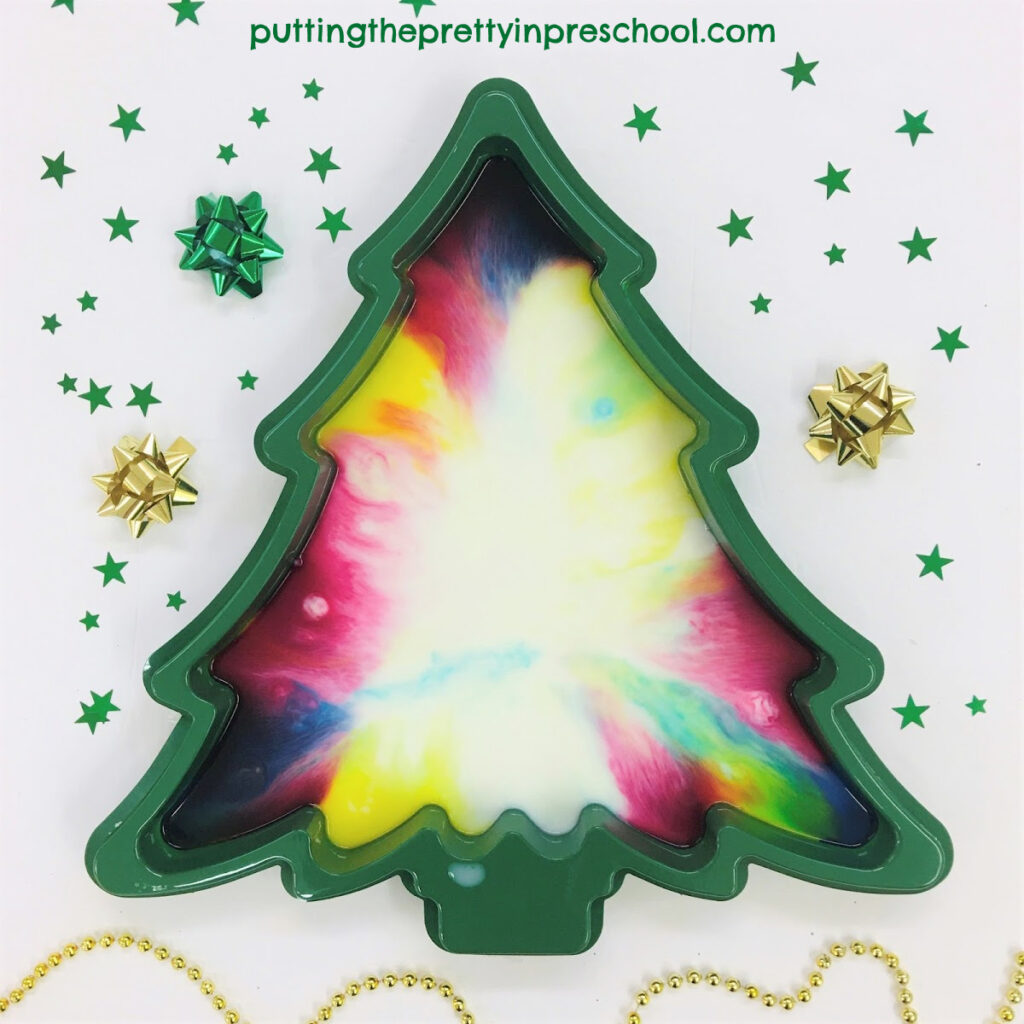
_______
In twenty minutes the tray looks like this:
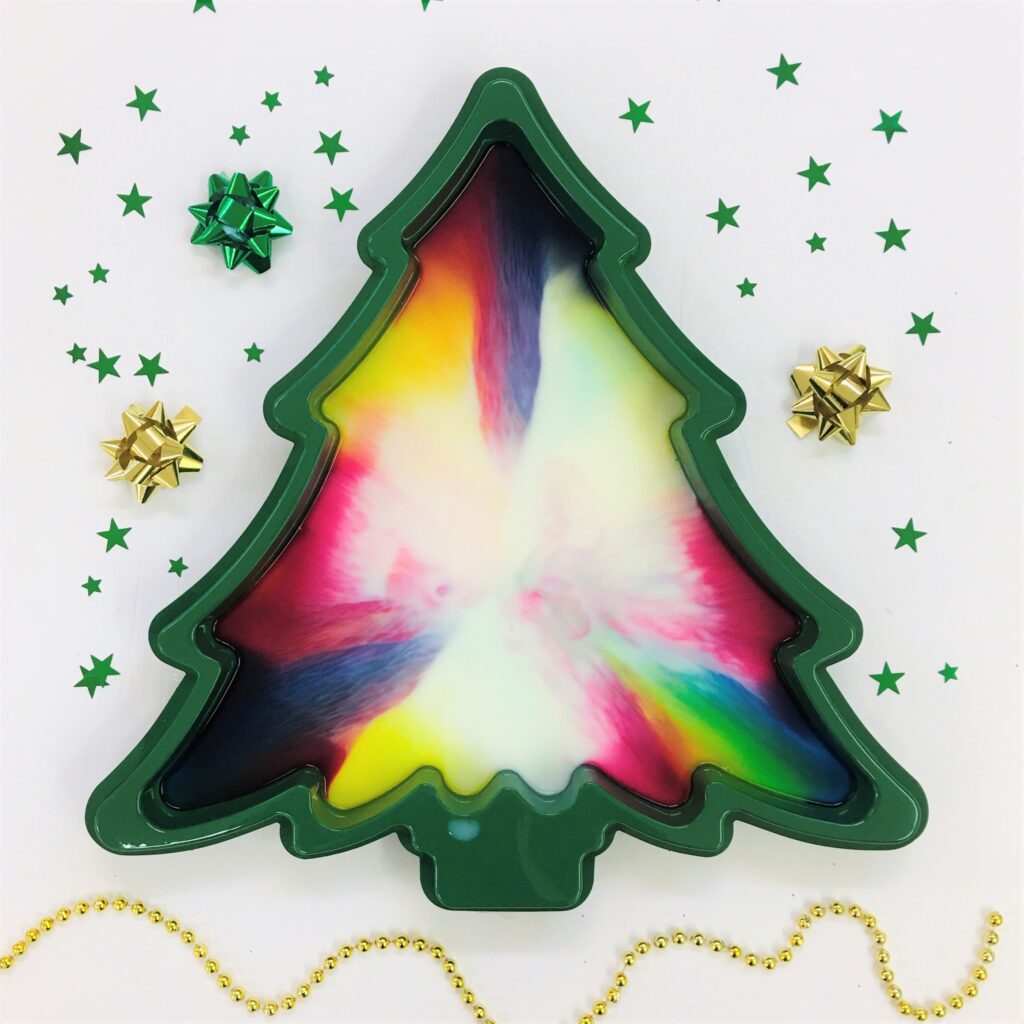
_______
The colors spread further.
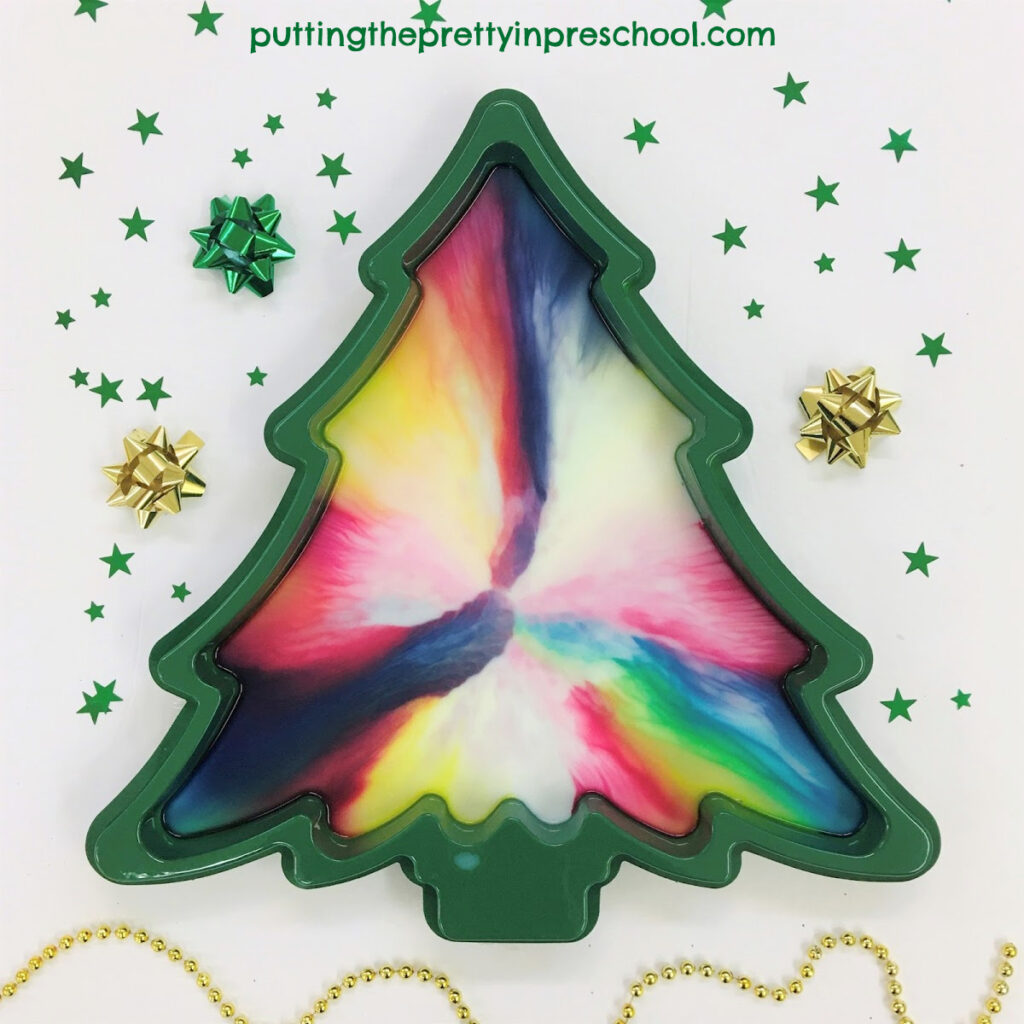
_______
Finally, they settle in pastel shades.
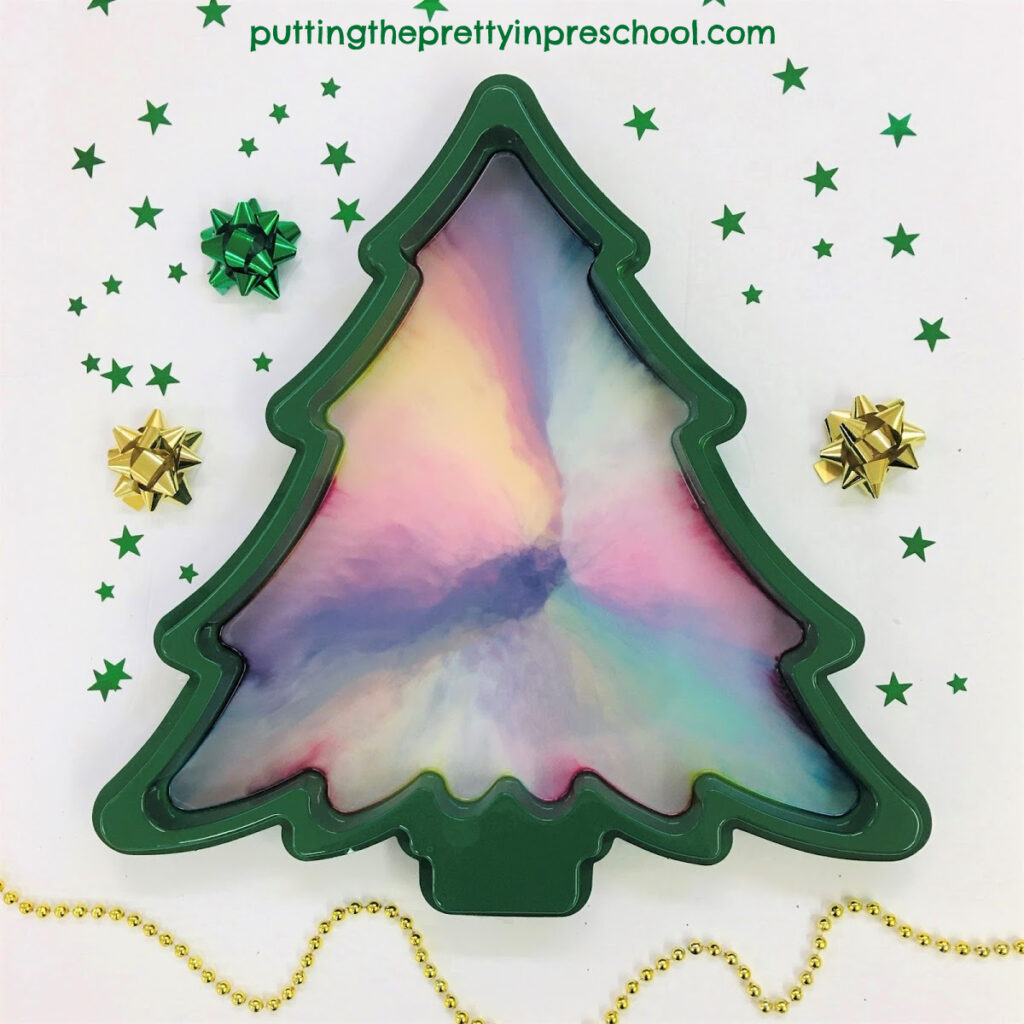
_______
Tip: Save milk that has expired for this experiment. I successfully use milk five weeks past the expiration day for this second demo.
_______
The Science Behind The Color Explosion Experiment
Although milk is made of mostly water, it also contains fat and protein. These are both sensitive to changes in the milk. When dish soap is added to the tray, it breaks up the surface tension of the milk and is attracted to the fat molecules. The fat molecules try to scurry away but end up bonded with the soap molecules. The movement of the food coloring makes this process visible. As more and more soap and fat molecules bond, the color movement slows down and eventually stops.
Since fat content in milk is super important in this experiment, homo milk works the best. But as seen above, 2% and 1% milk (which I had handy) also show stunning results.
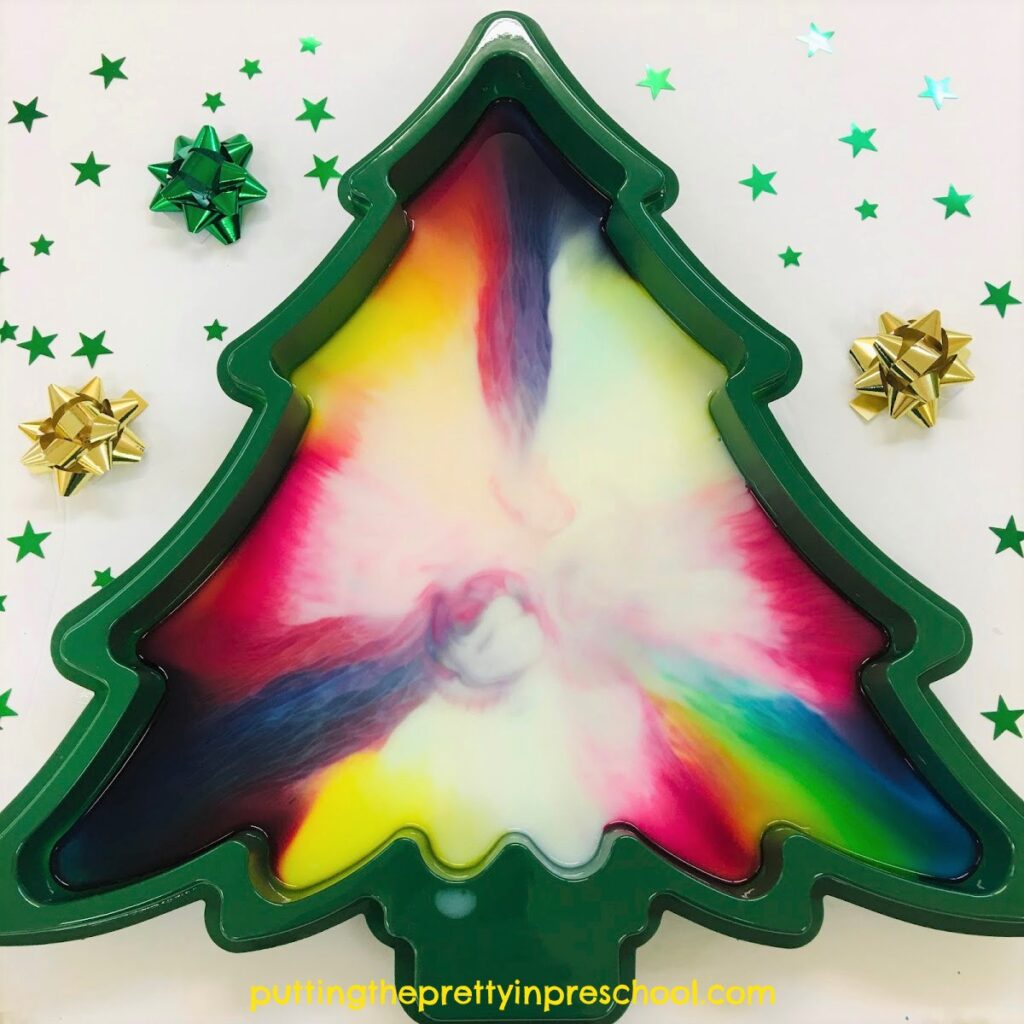
_______
[Read more…] about Color Explosion Science Experiment